- Home
- Tim Winton
The Boy Behind the Curtain Page 16
The Boy Behind the Curtain Read online
Page 16
Here where every field and some trees have names, where walls and cottages have names, where a cluster of houses has a collective name to distinguish it from the cluster 500 yards down the valley, place is as serious a proposition as religion. In fact the two are bound together in a way that’s both alien and very familiar to me. I count myself lucky to have been here to see and feel all these things, to meet these people, but I feel an ache now, a kind of build-up that is not simply an accumulation of sensations. More than just the constant brooding mass of the castle leaning out at me every hour, it’s a weight of story that’s almost burdensome. This is not my place; it’s bursting with stories but they’re not mine to tell. My myths were handed down in suburban streets by the sea, stories of fishermen and jockeys and superhuman women riding in sidecars. I’m a New Worlder, a coastdweller, and this landlocked valley, this world of niches and hedges and low skies, is making me a little claustrophobic.
A few days ago I woke with a light shining in my face. I thought I’d fallen asleep reading and left the bedside light on. But no, it was the sun shining in the window, warm and strong and clean for the first time since we arrived. Spring had come, and it made me think of home.
Up here at Spencer’s Cottage, I drag the biro across the page and try to spin the legends and the voices I grew up with into a house of my own. I think of my grandmother sending me up the ladder into the fig tree, hear her voice as she gallops her way through a bit of Browning, a dash of Longfellow. I remember the stories she told as I dropped figs into her bucket. We have our own marvels and ghosts. I have my own stories to tell. A house that sighs and breathes, pushes and pulls, a place of savagery and healing. It’s an unlikely idea, but I’m caught in it now. I’ll push on and see.
* Not long after these impressions were first set down I was at a dinner in Kinnitty where someone visiting from the coast recounted recently waking at night to see a train of lights on the beach below. As she stood at the window they passed silently, bobbing and dancing until they were obscured by cliffs. It was an unsettling sight. She thought these lights resembled torch flames held aloft by horsemen. In the morning she went down to the strand and saw no sign of their passage. Perhaps it was ball lightning; she didn’t know what to make of it. The story stayed with me. It was, I suspect, the germ of what would some years later become a novel. The Riders was the book about Ireland I never intended to write.
The novel I was writing at Leap was Cloudstreet.
Peter Bartlett moved into the castle keep and lived there happily for several months. But he grew ill that same year and returned to Australia for treatment. He died soon after. We were living back in Australia by then. I was on my way to visit him in Safety Bay when I heard the news.
Leap Castle was bought by the musician Sean Ryan, who has continued the work of restoration.
Chasing Giants
In winter the humpbacks are so close we can hear them breathing. On calm nights my wife and I listen to them crash and leap about as we lie in bed. When a whale slaps its tail against the ocean’s surface the noise it makes is peculiarly solid. It’s the sound of precision engineering doing its thing with confidence and satisfaction, like the deep, luxuriant noise of an expensive car door closing. Think of a bookie climbing into the Bentley after another day at the track – thwunk.
It’s hard to stay focused on work during whale season when you hear them all day, see their pillars of vapour from the kitchen window. As a distraction they’re worse than the fridge.
Whenever we can, when the wind drops and the gulf glasses off, my wife and I grab the big paddleboards and pick our way through the spinifex to the water’s edge. Flat-water paddling is good exercise and generally quite a meditative activity, but most of the time I do it to catch a glimpse of megafauna – I can’t help myself – and if we don’t encounter whales, manta rays or dugongs, there’ll be something smaller to see: turtles, tuskfish, schools of mullet. And there are always surprises: a bobbing knot of sea snakes, a Spanish mackerel that seems to fall from the sky, or a juvenile whale shark pootling along in the shallows long after its fellows have headed north toward Indonesia and the Philippines.
This winter we had our first sighting of sousas. A close cousin of the Chinese white dolphin, Sousa sahulensis, or the Australian humpback dolphin, was only described as a species in 2014, and it was exciting to encounter them a few hundred metres from home. To my eye they seemed stumpy, breaching in hurried jerks, and they were hard to keep track of. Unlike the more outgoing bottlenose dolphin, the sousa is shy, even cryptic. A bottlenose will often dart and frolic beneath you to get your attention, to satisfy its curiosity, but as we discovered, a sousa will most likely keep its distance, veering off or diving away when there’s a chance of things getting personal. We spent an hour playing cat-and-mouse with the pod and never made eye contact. They didn’t want to play.
I’ve had a passion for cetaceans since I was kid. I’d hardly outgrown my devotion to Flipper on TV when I moved to a town where sperm and humpback whales were being hunted to the brink of extinction. Visits to the flensing deck gave me my first intimate look at these immense and majestic mammals. For many years the closest I got to such creatures were the times I shared waves with dolphins in the surf, but in the 1990s, once the whaling stopped and the populations began to recover, I surfed with southern rights in the break and felt the songs of humpbacks ring in my body like the pulses of an MRI. And in the new century, when a 22-metre blue whale – the largest creature on the planet – washed up dead on a remote beach near our place on the midwest coast I was literally all over it, regardless of the cheesy stench. It rotted away foully for years, sloughing vast carpet rolls of blubber, spilling ribs and organs and oozing oil all over the white sand, until all that was left were a few tide-jumbled vertebrae that brought to mind the aftermath of a brawl in a beer garden. Even its dissolution was epic.
So, I confess, I’m a bit of an enthusiast. The sight of humpbacks steaming by on their annual migration is no novelty now, but it thrills me anew every time. When a whale writhes into the air at a distance I get an instant shot of adrenaline. Some days in winter the water erupts with bomb-like percussions. It’s like someone’s set off a minefield out there with all those welters of spray, all those shining slabs twisting in the air as if blown out of the water.
Binoculars are fine; I give mine a flogging. But when the migration’s on I want to be out there amongst it, and as often as I can I paddle out to meet the convoy.
Early in the season, excitement tends to outstrip common sense. It doesn’t matter if the pod is already level with our place and hopelessly far out, I’ll give chase anyway, telling myself I’ll catch up in the end. What this actually requires of course is being able to paddle twice as fast as a 15-metre mammal can swim at idling pace, and keeping it up for the best part of an hour. And believe me, even the lazy cetacean cruising speed of 3 or 4 knots is hard to sustain for long, especially for the middle-aged male tending toward the portly. The first time I tried it I felt like I was re-enacting the final reel of The Blues Brothers. This was not strictly a car chase, but it was a hectic and absurd pursuit every bit as overblown and underscripted as the film’s. It was a dumb thing to attempt, but like Dan Aykroyd and John Belushi, I’d come to believe I was on a mission from God.
When I finally drew near the pack, blistered and running with sweat, the sun was setting on the ranges and I was kilometres from home. My longsuffering wife, who’d sensibly given up the chase half an hour before, was but a speck on the water behind me. I knew I didn’t have much time, but for ten minutes I idled along at a prudent and legal distance as two calves turned to check me out and their mothers rounded up to wait and watch. The youngsters rolled and twisted, making currents with their glistening bodies. They slapped their tails and lifted their heads to take me in and if it hadn’t been for the fact that darkness was falling and my house was already lost in the gloom of the desert plain, I’d have stayed for hours.
Later i
n the season I’m a bit smarter about my whale watching and by then the pods are in so close there’s no need for grand chases. In September, on a dropping tide, we paddled out through phalanxes of lagoon rays and squid the colour of molten gold to meet a group little more than a stone’s throw from shore. Ahead of them, like an exuberant escort, a posse of sousa dolphins leapt and twirled, chiacking and showing off to their giant cousins. Of course in deducing the sousas had no interest in play I hadn’t really considered that they just might not want to play with me. They were like kids wired on red cordial. They were enormously entertaining, but they were also handy for gauging the whales’ movements. Whenever the big pod dived you could anticipate the point at which they’d surface again because ten or even twenty seconds before they breached, the dolphins would leap in a series of pairs, left and right, curling outward, mugging and spinning like jesters before the court.
That September day the whales slowed; you could feel them easing back on the throttle. As if they’d sensed us and become curious. My wife hung back wisely. Naturally I went in closer. As they let go their breaths, clouding me with gamy vapour, they groaned operatically, and in the muscular depth of that noise you could register the remarkable mass of their bodies. They paused and began to make eye contact, taking me in languorously. It was obvious the adults were considering, making decisions, directing their young. However many times you experience this, it’s unsettling. For here is an embodied consciousness on a scale you can’t quite assimilate. No matter how familiar you are with the scientific facts and abstract conjectures, it’s a shock to encounter this up close. Nothing can prepare you for it.
The youngsters were particularly curious. And when they circled back on me I found myself caught up – caught out, really – because I was no longer keeping a safe or legal distance from the action. I wasn’t impinging on their space; if anything, it was the other way round. They rolled and lifted their pecs. They ran leisurely figure-eights around me. The water was shallow and the resultant eddies made it hard to keep my feet.
Now, to have a whale beneath you is a thrill. But to have one slide under you in shallow water is a little nerve-racking. Once I saw what was happening I lifted my paddle and braced myself as best I could. All around me were footprints – churning fields of turbulence – and the dolphins, out skylarking amongst the adult whales at the perimeter, were not going to be any use to me in predicting where the calves were likely to breach. Then, beneath me and slightly ahead, I saw a shadow. For a moment it looked like the profile of a whale swimming across my path along the seabed. But we were in only 5 metres of water and the scale was all wrong. A moment later I realized it wasn’t the whole creature I was seeing. This was only its tail. Right beneath me. Getting bigger by the instant, scything up underfoot.
I got ready to jump but at the last moment the calf tilted slightly and its mighty tail broke the surface barely a metre to the left of me. It was slick and black, looking all of a sudden as big as the tailplane of a fighter jet, and as it rose before me, above me, glistening in the sun and shedding water in trickles and droplets, I was in no doubt it could have swatted me dead in an instant. But the tail just hung there, almost perpendicular, while I staggered, flailing like a tightrope artist with only the paddle for a balance pole. After a pause and a moment’s inversion, the calf dived, breached just ahead of me and with a throaty bawl coursed away toward the adults.
We paddled homeward, chirping with excitement, swapping observations and laughing at our luck. As we came in across the sandy flats, we startled a few blacktip sharks that had begun their annual aggregation. They were slick and twitchy, each about a metre long, and as they bolted they left festive puffs of silt in their wake. It was like coming home to a fireworks display. It seemed fitting. It was that kind of day.
The Demon Shark
I
Holy and Silent: On Peter Matthiessen’s Blue Meridian
If there is a unique cultural inheritance for those who grow up in much of this country it might be nothing more or less complicated than a sense of space, a way of being that Les Murray wryly calls ‘the quality of sprawl’. Raised on the beaches of Western Australia I was an heir to this glorious and often unexamined amplitude. There was such an open field before me: the long white beaches, the teeming rockpools and the limestone reefs where I chipped abalone with a screwdriver and a string bag at low tide. The sea itself was too big to be assimilated in a geographical sense; it had more in common with outer space than terrestrial habitat. It was so strange and elusive yet its sensual familiarity made it feel like home. Being in the sea or near it did weird things to my body. All that movement, lush and harsh, all the life, seen and unseen, set my mind a-smoulder. The oceanic scale of things often scrambled my head; the immensity and beauty were too much to process. My thoughts sputtered and fizzed, as hopeless and fragmentary as those of a besotted lover. At day’s end, after eight hours in the water, I could only think of more. In its way it was love. As a beach kid I knew there were things to be leery of – sucking currents, stings and jagged corals – but I still felt the sea was utterly benign. It was as intimate and mysterious as a mother. I didn’t fear it as much as the prospect of being denied access to it. I was an innocent in my Eden.
Well, that was before someone took my cousins and me to the Astor to see Carol Reed’s Oliver! Traumatic as musicals can be for a boy, I can hardly blame the movie itself, though it did feature the exceptionally unpleasant-looking Oliver Reed who, as Bill Sikes, compounded the early poor impression by beating poor Nancy to death with a club. Apparently family entertainment isn’t what it used to be. This was the most violent scene I’d ever encountered in a drama to that point, but I was already pretty stirred up because before the main feature my cousins and I had sat through the trailer for a documentary called Savage Shadows.
Savage Shadows was, in large part, a re-enactment of the day in 1964 when Victorian skindiver Henri Bource lost his left leg to a great white shark. The sight of this man being hauled aboard a small boat, threshing and flailing in a slather of blood was, to say the least, galvanizing. At the age of ten I was too young and too shocked to realize that Mr Bource was only acting. The voice-over told us this was real; it had actually happened. And it all looked authentic to me: the hole of his screaming mouth, the whites of his eyes, the outrage of his actual stump. The trailer itself can’t have been more than a few minutes in duration but its graphic imagery and sensational presentation left a deep impression, one that many millions of swimmers were to feel a few years later when Spielberg’s Jaws sent folks lurching from the cinema – and the water – in horror.
The benign sea suddenly had its Satan. Of course this trope was an Australian tradition, but until that afternoon in 1970 I hadn’t really internalized it. Afterwards the water was never quite the same.
‘The shadow of sharks,’ writes Peter Matthiessen, ‘is the shadow of death, and they call forth dim ultimate fears. Yet there is something holy in their silence.’ As a child in the cinema I understood this first proposition in an instant. It took longer to grasp the wisdom of the second.
In the wake of that cold, sweaty minute in the Astor it wasn’t as if I was consciously and constantly afraid of sharks but they were a liminal presence thereafter, something lurking in the water beyond the pleasure of the moment. It hardly ruined my life but it did divide the mind in a way that was new. For along with the creaturely joy of snorkelling in the open water behind the reef there was now a twitch of anxiety. The eye searched for something even when I wasn’t looking. Sitting on my foam surfboard, waiting with the pack for the next wave, there was always a little bit of consciousness reserved for the savage shadow.
Beachside aquariums were popular in those days. They weren’t the elaborate experience they’ve since become, with tunnels and moving walkways and thoughtful interpretive information; these were just tanks with thick, distorting windows, a freak show rather than an educational experience. The harried snapper and trevally coursing abou
t in those murky cauldrons were just background. What the punters wanted to see were the sharks: dozy, whiskered wobbegongs, grey nurses with their snaggle teeth and truckers’ bellies, bronze whalers so sleek and sinister, and the cruising hammerheads like visitants from hell. Just as Irish country folk tell ghost tales as they hoist a final pint before setting off home down the lonely lanes, local beachgoers liked to contemplate these wraiths on their way to or from a swim. We pressed our noses to the glass and thumped it with our fists. Once you’d seen them you couldn’t get enough. This was it, the lurking fear in plain view. They were appalling, these creatures, but seductive, too. Their shapes were inescapable, in the gill-slits of muscle cars, the fins of the latest surfboards. Teenagers wore their triangular teeth on leather thongs around their necks. Along with many schoolmates, I drew the classic whaler outline in countless maths books on sulphurously hot afternoons in class. I was a captive.
I borrowed shark books from the library to stare at the photos of great whites being hauled up grotesquely on docks, their vast girths forced out through their mouths by gravity. People chalked their names upon carcasses and posed po-faced like heroes. I pored over photos of limbs, engine parts and animals cut from the guts of sharks. Shark-hunting was popular in the sixties and there were many images of skindivers Ben and Eva Cropp killing grey nurses with ‘bang sticks’, or ‘smokies’, which were spears armed with a shotgun cartridge. There was a famous photo of the elfin Valerie Taylor with her arm in a shark’s mouth, the creature wrenching unsuccessfully at the chain mail she’d armoured herself with for the camera. I returned time and again to the grueseome pictures of Rodney Fox who’d been bitten by a great white in 1963. Despite having his lungs and intestines exposed, Fox survived the attack and like Henri Bource had gone back to the sea with the doggedness of a spurned lover.

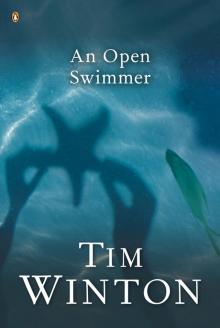 An Open Swimmer
An Open Swimmer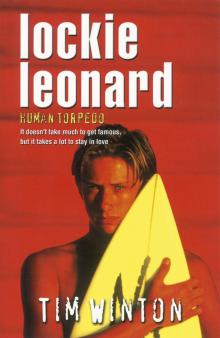 Human Torpedo
Human Torpedo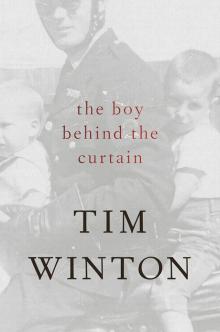 The Boy Behind the Curtain
The Boy Behind the Curtain Scission
Scission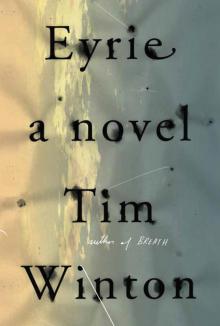 Eyrie
Eyrie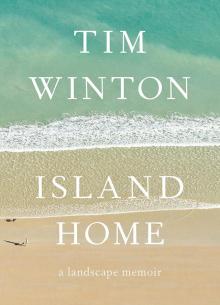 Island Home
Island Home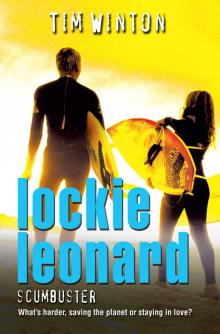 Scumbuster
Scumbuster The Turning
The Turning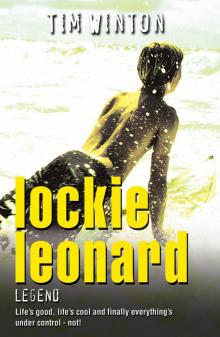 Legend
Legend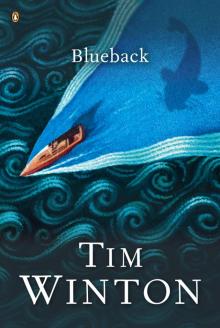 Blueback
Blueback Signs of Life
Signs of Life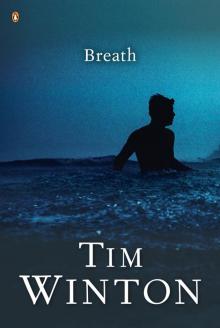 Breath
Breath Land's Edge
Land's Edge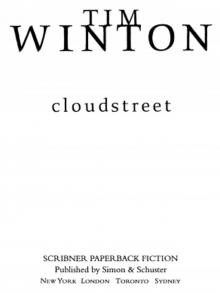 Cloudstreet
Cloudstreet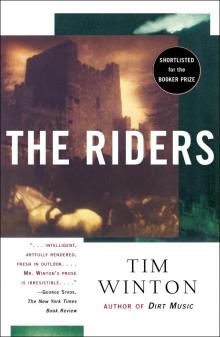 The Riders
The Riders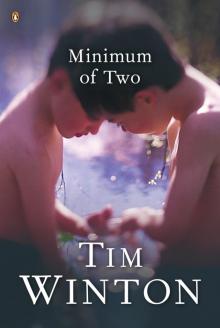 Minimum of Two
Minimum of Two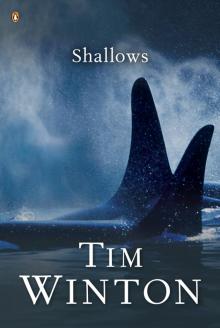 Shallows
Shallows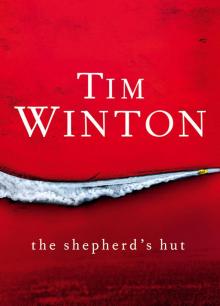 The Shepherd's Hut
The Shepherd's Hut In the Winter Dark
In the Winter Dark